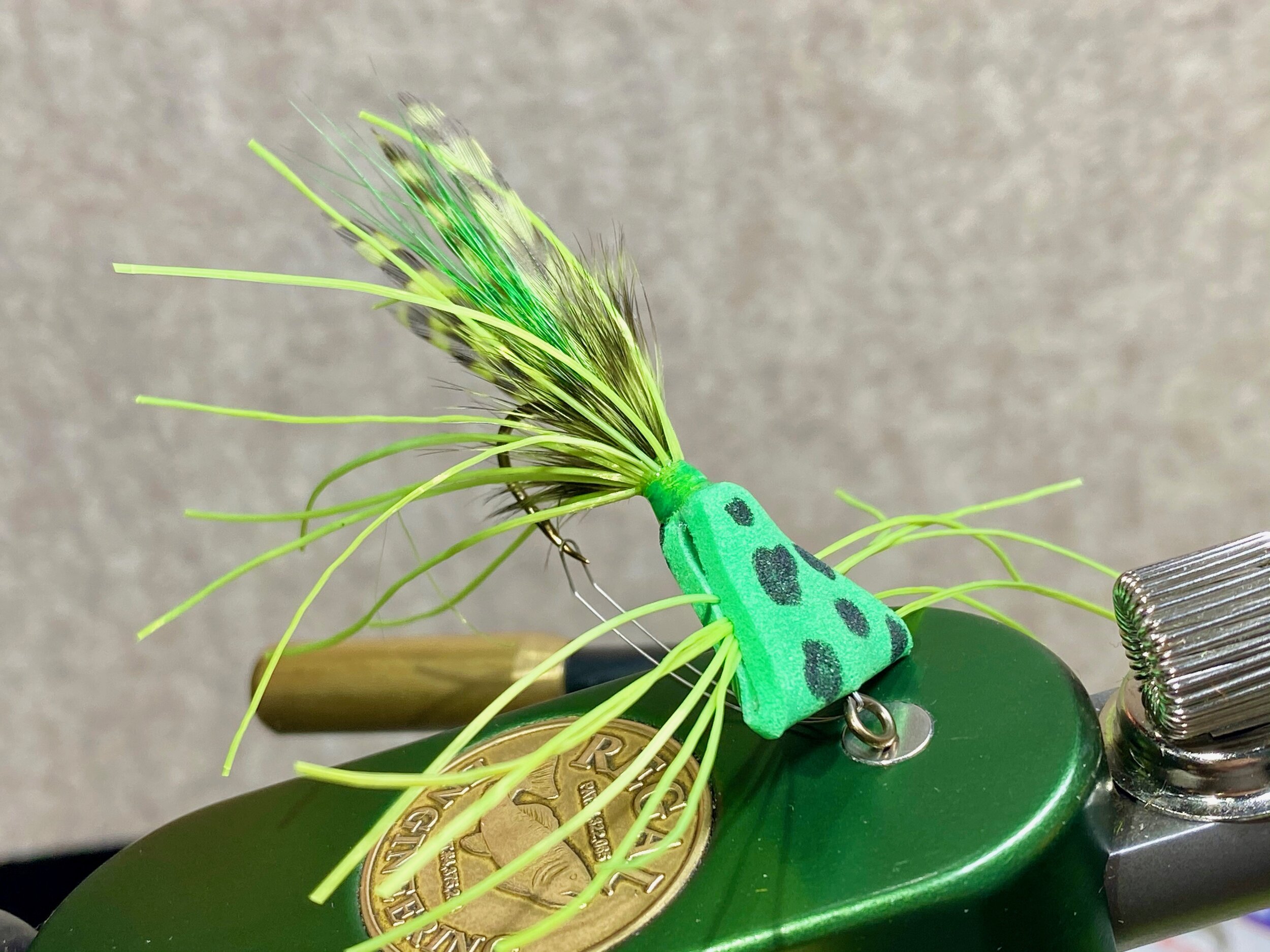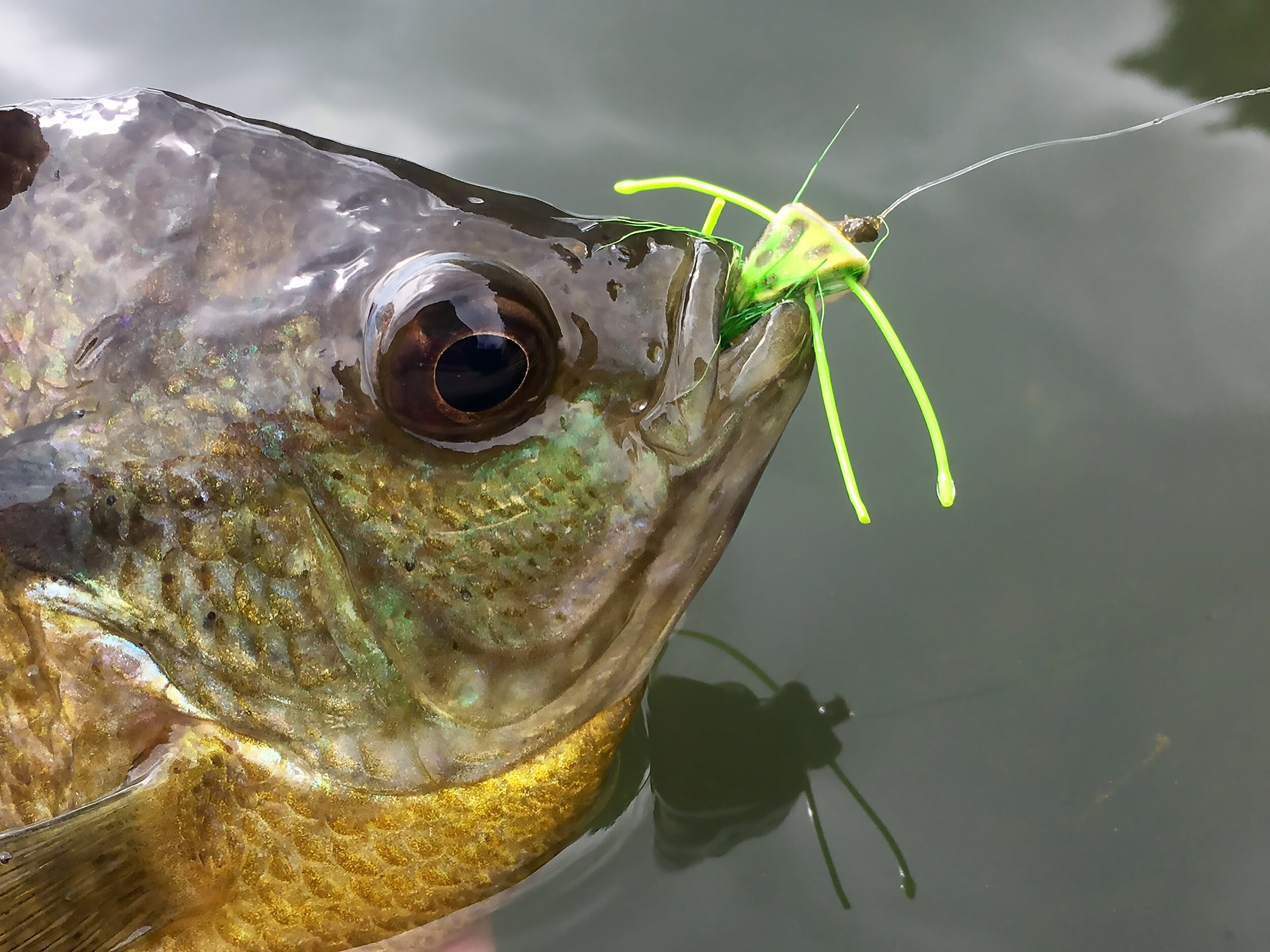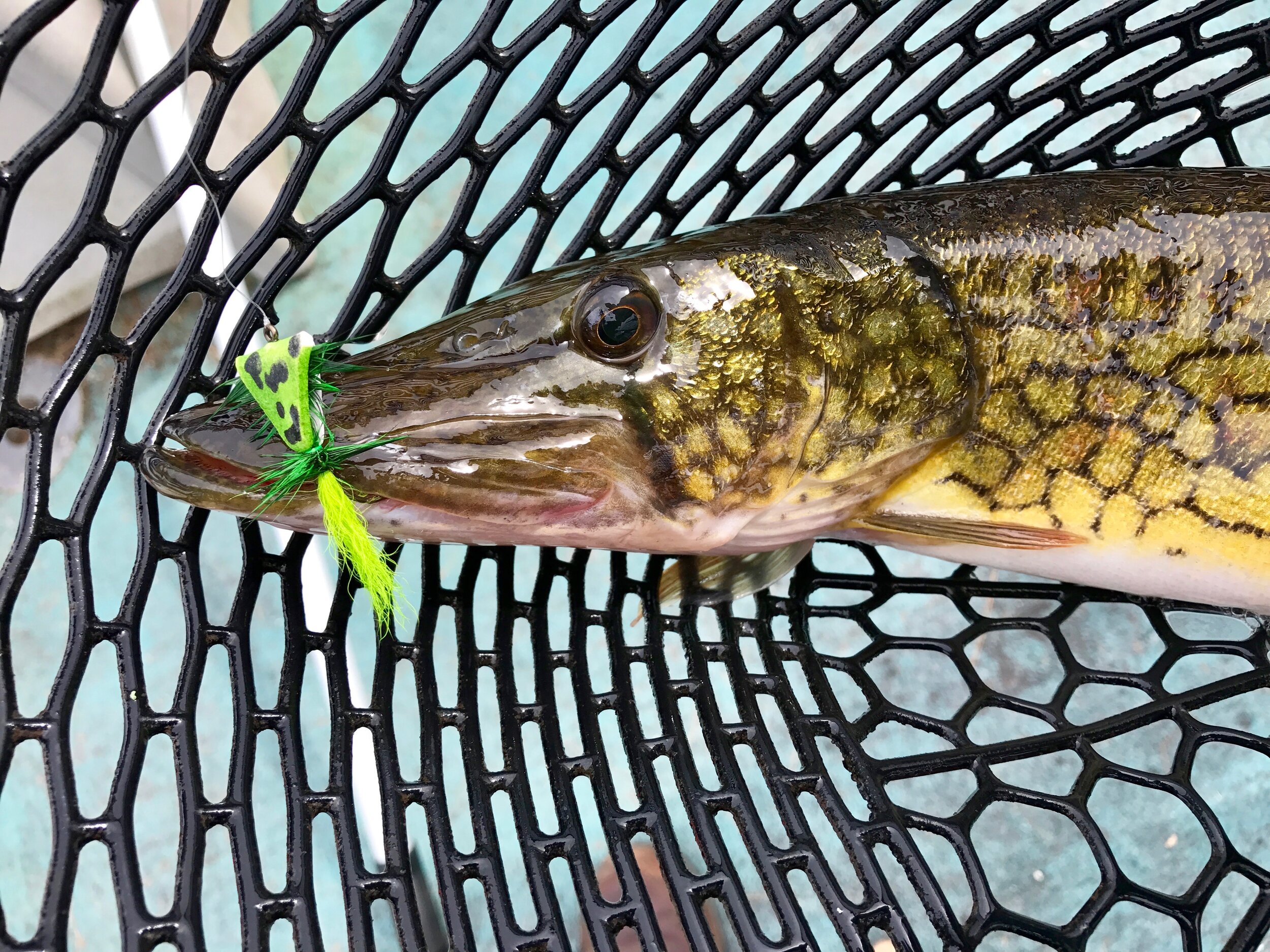For a long time, I have touted the Triangle Bugs' effectiveness as a topwater panfish fly. Over the years, I have caught a variety of fish species on this little bug while fishing for panfish. This list included many largemouth bass, including one six-pound fish that sipped that tiny size eight fly from the surface like a trout taking a mayfly. So it was a logical decision to tie these bugs a little larger and target bass with them.
I’ve caught scores of bass on panfish-sized Triangle Bugs! Why not create a fly just for them.
As I have stated in the past, the Triangle Bug's original concept was not to imitate a particular food of bluegills and other panfish. The design had another purpose. Bluegills and other sunfish have small mouths, but they have an uncanny ability to swallow flies deeply. That tiny mouth makes unhooking the fish without further injury very difficult. The triangular shape of the T-Bug combats that problem. The fly's profile allows small-mouthed panfish to grab it off the surface but prevents the fish from swallowing it.
The Triangle Bug in action! Small mouthed panfish get all chocked up about this bug!
Why It Works
I cannot explain the workings of a bluegill's brain, so I have no idea what they think they are eating when they slurp one of these flies off the surface. However, bass have an incredibly diverse diet. If it moves and looks alive, they will try and eat it whether it swims in the water, crawls on the land, or flies in the air. Perhaps a little of that DNA exists in their smaller sunfish cousins. That could explain a bluegills affinity towards the Triangle Bug.
The largemouth bass is not a particularly picky eater. It will try and eat anything it can fit into it’s mouth, including Triangle Bugs!
When I tie larger versions of the Triangle Bug for bass and other larger predators, I tend to beef them up a bit. The idea here is to create more of a disturbance in the water. While the Triangle Bug's secret to panfish's success is its subtle presentation, when fishing for bass, I want to make a more significant impression. What this translates to at the vise is the use of thicker foam for better flotation. Bass versions also have more complex tails which combine materials like bucktail, hackle, or precut shapes. Finally, additional rubber legs are added for movement and weedless hooks if I plan to fish the fly in dense cover, which is usually the case.
You will catch more bass, if you fish flies that attract their attention!
If you are looking to tie some up for yourself, here are a few things to consider. At the moment, I do not have a commercially available foam cutter for larger sizes of the Triangle Bug. Enough people have contacted me regarding this that it will become a reality very soon, stay tuned! Regarding the foam itself, depending on the size fly you want to tie, you will have better results using thicker foam. Most craft store foam is 2mm thick, and I will often use 3mm or even 4mm foam for larger flies, depending on how I dress them.
When selecting a hook for your Bass Triangle Bugs make sure the hook is sharp, strong and has a wide hook gap. This Firehole Outdoor Model 718 is perfect fo a bass-sized fly.
A Word Or Two On Hooks
When changing the design to target bass, selecting a sharp, solid hook with a wide hook gap is essential. I still prefer to use as light as a hook as possible without sacrificing strength. The hook needs to be extremely sharp and have a wide hook gap to help in piercing the tough mouth of a bass
Largemouth bass love the slop! Fishing weedless flies in water like this will save you a lot of headaches.
Make Them Weedless
My current preferred hook is the Firehole Outdoors Model 718. This hook has an extra-wide hook gap and a downward bend that is perfect for this fly! The hook is barbless, and its shape allows for the use of a unique mono weed guard I prefer to use on this pattern. It performs much like the wire weed guard you find on plastic worm hooks. Which, by the way, also is a good option for creating a weedless Triangle Bug. I use these worm hooks if I have a supply lying around, but it does get to be a little expensive as the hooks are not cheap. A traditional loop style, mono weed guard, will also work and is pretty easy to add to this fly.
I make my own “wire guard style” weed guards out of heavy mono. They work just as well if not better (they never get bent out of shape) and they are much more economical. The upswept point of the Firehole Outdoors model 718 is perfect for this style weed guard.
Barbless Hooks
Regarding the barbless nature of the Firehole Outdoors Model 718, I know many bass anglers are concerned about using barbless hooks. I feel those concerns are unwarranted. I get better penetration using a barbless hook, which results in more hookups. After fishing barbless hooks for trout for decades, their fish catching ability is well proven.
This bass-sized lightly dressed version of a Triangle Bug still has way more movement in the water than a traditional panfish fly. More rubber legs and a tail dressed up with a few wraps of hackle turn a panfish killer into a bass killer!
Building The Bug
When dressing the tail of a Triangle Bug for bass, I am looking to create a lot of disturbance and movement on the water. Due to the larger size of the fly, I switch from calf tail to bucktail to compensate for the added length and stiffness I am looking for. I often add a set of two feathers to each side of the bucktail for added movement in the water. Another addition that is not present on the panfish version is some hackle wound around the hook shank at the foam body's base. This addition creates sound, movement, and color to the pattern. Another option is the use of some of the precut forms that are on the market today. Shapes like twist tails and frog legs from Pat Cohen's Creature collection are a solid choice, and new materials are introduced every year.
A Triangle Bug with dressed with one of Pat Cohen’s Double Flutter Tails proved irresistible to this Chain Pickerel.
Rubber legs are standard on the Triangle Bug, and on the bass version, there are just a lot more of them. I prefer silicon legs because they are durable and provide a lot of movement, but feel free to substitute round rubber. I will often add them to the tail in addition to the body of the fly.
The Tri-Bubble Bug is my spin on the classic Gerbubble Bug. It is probably my favorite way to tie Triangle Bugs for bass!
An Old Pattern Reborn
There is one more version of the Triangle Bug that I would like to mention: a spin-off of an old bass bug called the Gerbubble Bug. Originally tied of wood or cork (Dave Whitlock did a fantastic deer hair version) it was a simple fly that had the fibers of a feather protruding from the sides of the fly. The Gerbubble Bug is a long-time favorite bass pattern, so it seemed only natural that the Tri-bubble Bug became a thing. Instead of rubber legs, the fibers of a schlapen style hackle protrude from the sides of the bug just like the good ole Gerbubble Bug! This fly has proven itself to be a very effective pattern and is one worth trying.
It is not just bass that find these super sized Triangle Bugs appealing. This large Chain pickerel seems particularly fond of this Tri-Bubble Bug!
Fishing The Bass Triangle Bug
As previously mentioned, this version of the fly is usually tied in a weedless version as the fly is fished in and around the heavy cover where the largemouth bass often lives. On occasion, depending on how you dressed the fly, you may find that the fly occasionally lands upside down with the hook pointing up. If you wish to correct that, you can add a few wraps of lead wire secured with superglue just beneath the hook's bend. This added weight will ensure it lands in the correct orientation on the water. You can do this at the vise when you are tying the fly, or you can do it on the water as I do. I always carry a spool of lead wire and some superglue in my tackle bag to correct flies that don't land properly.
If you look closely you can see wraps of lead wire applied to the hook of this Tri-Bubble Bug. This fly kept landing upside down and a few wraps of lead fixed the problem. This tiny bass provides is a good example of how bass feed. If they can fit it in their mouth, or even if they can’t as the case with this guy, they will try and eat it!
If standard Triangle Bugs catching bass for you, why not tie some up specifically for these feisty predators?
Looking for the materials to tie the flies mentioned in this post? Please consider purchasing them from our shop. Click on the links in the article or the button below to check out our line of flies, fly tying materials and fly fishing accessories.













